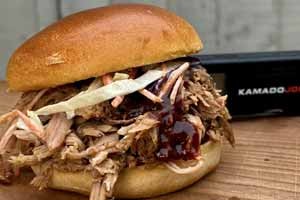Easy, tender BBQ pulled pork, loaded into buns with coleslaw and BBQ sauce.
5 Science-Backed Tips for Cooking Tender Lean Meats
Everyone enjoys juicy chicken wings, melt-in-the-mouth ribs and a succulent marbled steak. But sometimes, we need to keep things lean. Lower in fat but still high in protein, lean meats are a great choice for making your meals healthier.
Low-fat meats typically have a bad rap for being tough and dry, but it’s really all about how you cook them. It’s easy to create juicy chicken breasts and tender lean meat with a few hacks on hand. So, if you want to find out how to tenderise chicken, or make your lean pork or beef more succulent, follow these easy tricks to keep your low-fat dishes delicious.
Read on to discover our science-backed tips for cooking juicy lean meat so you can still get your gains without compromising on flavour.
What is lean meat?
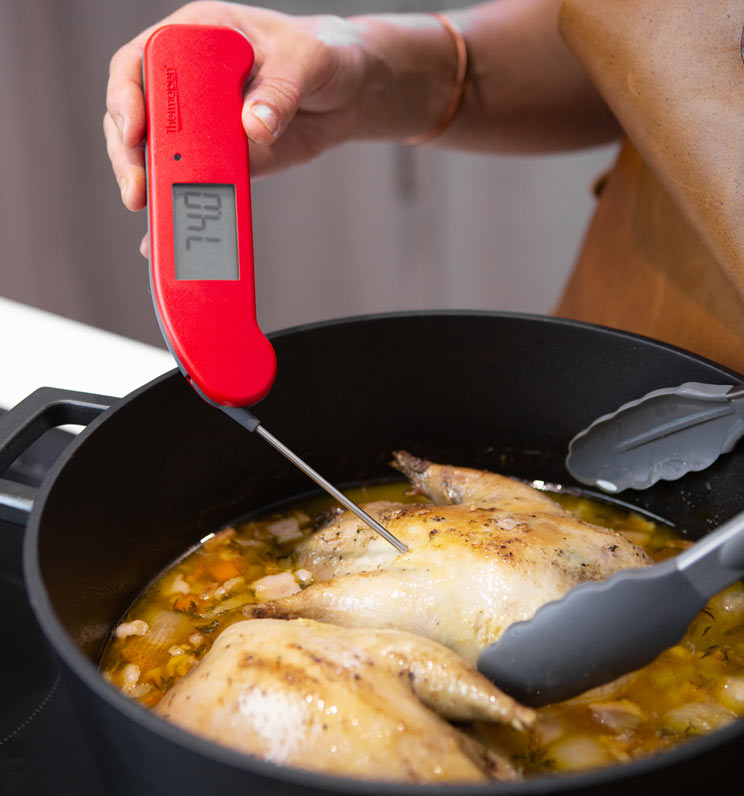
Lean meat is meat that contains little fat. Some examples of lean meat are:
- White meats like skinless chicken and turkey breasts
- Pork chops or loin with the fat trimmed off
- Lean beef mince or steak
- Venison, pheasant and other wild game meats
Fat is usually found in the skin and on the meat around the bones. So, lean choices would be chicken breast over chicken wings or a beef steak with the fat trimmed and no marbling. Wild game meat tends to be leaner because wild animals eat naturally foraged diets and move around more than farmed ones. So, venison can make a great alternative to beef or lamb, which are typically high in fat.
Why Lean Meat Can Be Dry
Lean meat is primarily made up of muscle, which is 70 to 85% water. This water needs to be conserved during cooking, or the meat will end up dry. In fattier meats, the fat and connective tissue break down during cooking, adding richly flavoured moisture that keeps the meat juicy and tender. Because lean meat doesn’t have this, it’s much easier to accidentally spoil your dish by drying it out.
Tips for Cooking Tender Low-Fat Meats
Don’t worry, there are lots of ways you can conserve those precious juices while your lean meat cooks. Follow these tips to get succulent results every time.
Wet Brining
Traditional cooking advice suggests that basting whole birds in their juices will keep the meat succulent. However, this has been found to have little benefit. Already saturated with juices, the muscle tissue isn’t able to absorb any more. It instead runs off the surface, forming a glaze. The glaze might be delicious, but it’s not moist-inducing.
A more modern approach to ensuring a succulent whole bird is wet brining — submerging the bird in salty water overnight to infuse it with moisture and flavour. Salt permeates the meat through diffusion, pulling water along via osmosis.
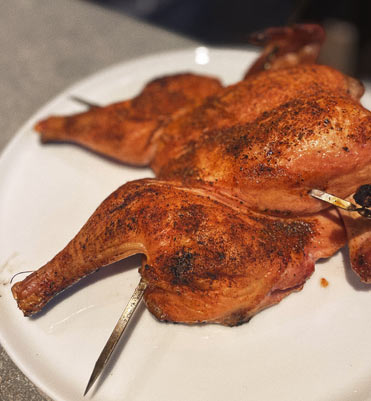
Butterflying and Pounding
Flattening meat can help it to cook more evenly. Otherwise, some areas can become overdone while others still aren’t cooked. This happens particularly with whole-roasted birds.
One way to flatten meat is butterflying. This involves preparing meat, fish, or poultry for cooking by nearly cutting it in two, but keeping the two parts connected. It is commonly followed by boning and flattening. Spatchcocking is a type of butterflying — the backbone is removed so that it can lay flat with the breast in the centre and the legs on either side.
You can also gently pound meat like chicken breasts to make it more uniform in thickness and help it cook more evenly.
Moist Cooking Methods
Choosing a method that involves cooking your meat in a liquid or moisture-rich environment can help it to stay more tender. Methods like sous vide, braising, poaching, slow cooking and en papillote (cooking wrapped in parchment paper) prevent the meat’s natural juices from being evaporated and help it cook more uniformly.
Cooking to Temperature
The most important tip when it comes to lean meat is to cook to temperature. As lean meat like chicken breast increases in temperature, its moisture begins to evaporate. It’s imperative to cook it up to 74 °C to ensure it’s safe to eat, but after this point, essential moisture will be lost with no benefit. Make sure to remove lean meats from the heat as soon as they hit their cooked temperature to get the best result.
Resting
Heat causes moisture to move towards the meat’s surface as it cooks. Afterwards, as it rests, the temperature and juices become more evenly distributed. If you slice into your meat too quickly, it won’t have a chance to do this and more of the juices will be lost. In addition, as the meat cools, the water between the muscle fibres mingles with broken-down proteins, causing the juices to thicken. This makes them more delicious and easily retained.
The time you rest your meat depends on many factors like its size and the ambient temperature. Smaller meats typically benefit from around 10 minutes of resting time. Larger meats, like whole-cooked chickens, can often rest for one to two hours.
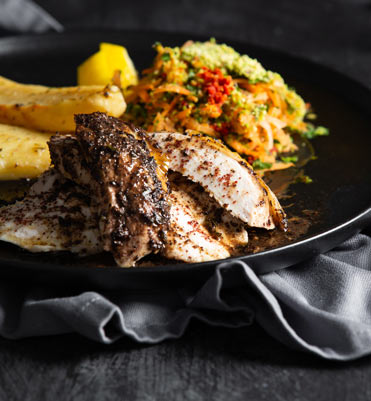
The Takeaway
Cooking lean meat in the correct way means you can enjoy the benefits of eating lower-fat options without compromising on the soft and succulent texture that really makes a meat dish.
Wet brining, flattening meat for more even cooking, and adding moisture into the process can all help to prevent losing precious juices. Resting is also key for letting the juices thicken up and reabsorb into the meat.
The most important tip for cooking juicy chicken breasts and other lean meats is to cook to temperature. Overcooking is the ultimate thief of delicious moisture in meat dishes, and a reliable instant-read thermometer will make it easy to get it spot on every time.
Related posts
 How to Cook Christmas Turkey on a BBQ
How to Cook Christmas Turkey on a BBQ
 5 Best Cooking Christmas Gifts 2025
5 Best Cooking Christmas Gifts 2025
 Mike Tomkins' Ultimate Beef Wellington
Mike Tomkins' Ultimate Beef Wellington
 Christmas Marmalade Glazed Gammon
Christmas Marmalade Glazed Gammon
 How Long to Rest a Turkey
How Long to Rest a Turkey
Search
Categories
- Baking (35)
- BBQ (85)
- Autumn (14)
- Cheap Eats (9)
- Sweet Treats (38)
- Tips, Advice & Info (78)
- Christmas (36)
- Drinks (2)
- Thermapen Father's Day Recipes (18)
- Team Temperature (28)
- Date Night (37)
- Celebrations (20)
- Family & Kids (10)
- Fish (21)
- Low & Slow (13)
- Meat (142) click
-
Chefs (132)
click
- Kenny Tutt (16)
- Richard Holden (16)
- Barbechoo (7)
- Only Slaggin (1)
- SoSaSe Chocolat (1)
- Genevieve Taylor (5)
- Becky Excell (2)
- Charlotte Stirling-Reed (3)
- The Smokin Elk (13)
- Marcus Bawdon (2)
- Thermapen Chef (25)
- Edd Kimber (2)
- Humble Plates (7)
- Simon May (4)
- The Hedgecombers (3)
- Billy & Jack (4)
- Perfectly Preserved (3)
- Mike Tomkins (20)
- DJ BBQ (2)
- Nick Nairn (4)
- BBQ Jake (1)
- Air Fryer (9)
- RFX (6)
- Featured (3)
Latest recipes
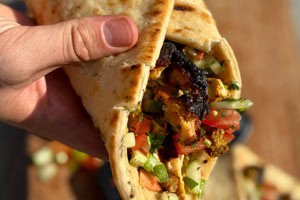
Rotisserie-cooked chicken shawarma, coated in a punchy yoghurt marinade. Pile into flatbreads with salad
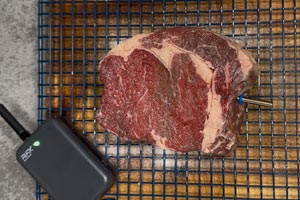
Ribeye is an amazing, flavour-packed cut of beef. Learn how to cook ribeye steak medium rare using the reverse sear...

Elky Whittaker, aka The Smokin’ Elk, began barbecuing as a hobby 10 years ago. Today, he has 262k Instagram followers...
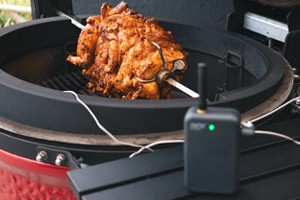
Juicy BBQ chicken shawarma recipe with homemade flatbreads and garlic sauce.
Archive
Popular Recipes
